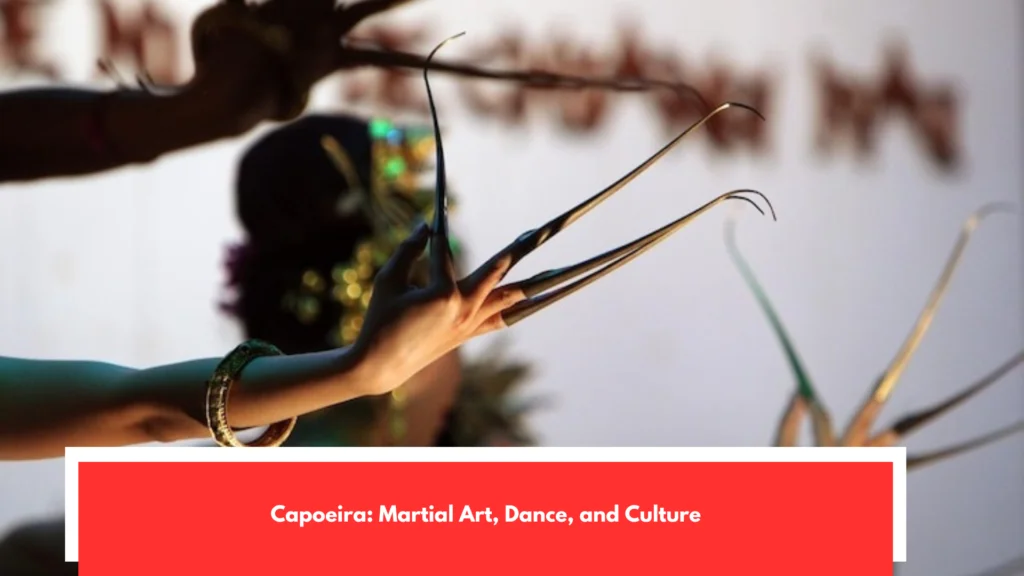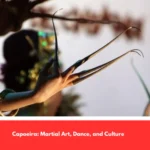Capoeira, which is said to blend dance, acrobatics, and martial arts, comes from the culture of Brazil. Over the years, this type of art has interested people all over the world because of its beautiful looks as well as the competitive part of it. The fact that capoeira is based on the combination of dance and martial art has started conversations among those interested in it. Is the main idea behind martial arts to express yourself, share a story through dance, or to learn self-defense? Capoeira Martial Art shows it can be all three, depending on how you see it.
For certain people, Capoeira mainly acts like a dance. The skillful and leisurely movements dance lovers make, frequently set to the melodies of traditional Brazilian instruments, are really eye-catching. When seen from a dance viewpoint, Capoeira acts as a theatre performance showing the rich culture and history of the people through their movements. Those who follow this camp aim to express what they feel and know using Capoeira’s art and rhymes.
A Distinct Artistic Culture Can Be Elegant

On another side, people see Capoeira mainly as a type of martial art. Capoeira developed because enslaved Africans in Brazil had to defend themselves against those who captured and enslaved them. Thus, the skills required for fighting are very important. Self-defense is possible with capoeira due to the many strikes, kicks, and avoiding strategies commonly used in capoeira training. It is true that the combat applications of Capoeira aren’t as easy to spot as those found in Brazilian Jiu-Jitsu or Muay Thai, but it does have options for effective self-defense.
Actually, it is common for practitioners to combine the approaches of dance and martial arts. They realize that Capoeira is beautiful since it effectively combines practicality with artistic movements. Moves in capoeira, including flips, handstands, and cartwheels, impress people not only with their appearance but also with how they help in fights. Within the roda, the circle used in Capoeira, people have the chance to train and practice their moves in an exciting but controlled way. This viewpoint shows that both dance and martial arts play a major role in what Capoeira is all about.
Martial Arts Roots

The industry of entertainment is well aware of the double nature of capoeira. Only the Strong and Tekken are some examples where Capoeira’s exciting moves can be seen and used in fighting scenes. Because of this, more people are able to watch this type of dance and it further blends dance with martial art. Beside arts and fighting, Capoeira also helped take a stand in social and cultural causes. In marginalized communities, dance has been a helpful way to educate and give people opportunities to belong and feel purposeful.
Despite how one sees Capoeira, most beginners concentrate on learning the essentials, which include kicks and acrobatics. With time, they may pick whether to focus on dance or martial skills based on their likes and where they’d like to go. Capoeira is unique because it has two sides that are both skillful and enigmatic. No matter if you consider it a dance or a martial art, Capoeira’s long background, meaningful traditions, and interesting movements always.
Rich in Culture & Art

Make it stand out. Keep in mind that the main aspect of Capoeira comes from how the dance form and martial arts work together and change in a unique reflection of Brazil’s past and present culture. Cultural activities should be as important as lessons in learning how to speak Portuguese in Brazil. To feel what Brazil is all about, you need to enjoy its music, lively dances, and passionate energy. Only recently, our students in Portuguese went to Rio de Janeiro to take part in a capoeira class, which showed how uniquely combining activity, culture, and music can motivate people.
Capoeira gathers influences from martial arts, various styles of dancing, playing music, and the culture around it. The Brazilian origin of the style has allowed it to reach people across the world. It is marked by acrobatic and choreographic moves done to the beat of famous musical instruments such as the berimbau, the atabaque, and the pandeiro. Capoeira is possible as a game, with people called capoeiristas matching moves around a roda circle, depending on each other’s actions and using different skills and strategies.
Conclusion

Making its impact very noticeable. This art form is used by many cultures globally and has been classified as an Intangible Cultural Heritage of Humanity by UNESCO, which shows how meaningful it is to society. With its special skills, capoeira is used in many places, such as sports, schools, therapy, to help people develop socially, culturally, and personally. Practicing Capoeira is beneficial in different ways, such as by improving the body, the mind, and social skills. Physically, Capoeira helps build muscle, improves your ability to exercise for a long time, makes you more flexible, and improves your coordination.
Doing exciting acrobatics and kicks in martial arts calls for excellent control and helps build the core, arms, and legs. Besides, practicing Capoeira on a regular basis increases agility and balance, which also lowers the risk of injury. Capoeira helps people develop concentration and awareness of their actions. Having to watch and answer the movements of other players in the roda practice the mind’s quick thinking and decision-making ability. In addition, the rhythm and songs in Capoeira can improve the brain’s abilities and help sharpen creative thinking. Playing capoeira generally helps those practicing by reducing stress and boosting their emotions.





